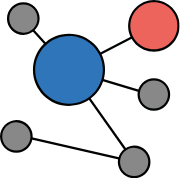The Rohingya Survey 2019
Bangladesh, 2019
Get MicrodataIdentification
HDX_xchange_BGD_2019_RohingyaSurvey_vEXT
The Rohingya Survey 2019
| Name | Country code |
|---|---|
| Bangladesh | BGD |
Other Household Survey [hh/oth]
The objective of this project was to provide an assessment of the situation in Rohingya refugee camps from the perspective of adult Rohingya Muslims that had arrived in Bangladesh after the August 25th2017 military operation in northern Rakhine State. Moreover, we sought to identify the Rohingya’s social connections, coping mechanisms, opinions about the proposed Rohingya relocation to Bhasan Char island, and their plans for the future.
Sample survey data [ssd]
Individuals
Version
v2.1: Edited, anonymous dataset for public distribution
Scope
Arrival in Bangladesh and residence; family situation; education; occupation and employment; violence, sexual harassment and missing children; information access; social hierarchy; social connectedness; relocation.
| Topic |
|---|
| Protection |
| Education |
| Community Services |
| Livelihood & Social cohesion |
| Gender Based Violence |
| Child Protection |
| Return |
| Information Management |
| Solutions |
Coverage
Kutupalong, Balukhali, Thangkhali, Hakimpara, and Shamlapur refugee settlements in Cox’s Bazar district, Bangladesh.
All ‘New’ Rohingya (those who had arrived in Bangladesh after the events of 25 August 2017) and currently residing in refugee camps in Cox’s Bazar district.
Producers and sponsors
| Name |
|---|
| xChange |
Sampling
The researchers employed a quota sampling technique. The underlying target population was estimated to be 283,937 adults (over 18 years old), ‘new’ Rohingya (those who had arrived in Bangladesh after the events of 25 August 2017) and currently residing in refugee camps in Cox’s Bazar district. This number was determined through simple calculations based on the most current data available from the UNHCR (15 March 2019) at the time of data collection preparation. The target sample was 1,300 new adult Rohingya. The data provided by the UNHCR allowed the researchers to establish the population and gender distribution for each refugee camp, and thus choose the number of respondents to include in the survey from each camp proportionately. Each subgroup within the target population received representation within the sample and no subpopulation was overrepresented in the results
Out of a total of 1,455 surveys conducted, 1,277 were deemed sufficient for further analysis. The sample of 1,277 respondents can be considered broadly representative of the total adult, new Rohingya population residing in the selected refugee camps across Cox’s Bazar district
The enumerators were given instructions to select respondents randomly in the chosen camps which was not always possible for several reasons. Hence, even though the sample can be considered representative of the population under study, the potential for selection bias cannot be excluded.
The enumerators, as Rohingya refugees themselves and fluent in Rohingya, could clarify questions posed by the respondents. However, the questions and the responses were translated from English to Rohingya and from Rohingya to English respectively by each enumerator on the spot. This might have resulted in misinterpretations and/or negatively influenced the accuracy of some responses.
Data regarding the respondents’ views of Rohingya involvement in illegal activities, substance use as a coping mechanism, and of violence in the camps should be interpreted with caution because of the potential for bias due to respondents trying to preserve the image of their community with regards to these sensitive topics
Data collection
| Start | End |
|---|---|
| 2019-03-01 | 2019-04-30 |
| Name |
|---|
| xChange |
The survey design was based on Xchange’s previous reports, literature reviews, and key informant interviews. The research instrument included questions based on Likert scale responses, closed-ended questions (yes/no), open-ended questions, and multiple-choice questions. The answers to the open-ended questions were translated by the enumerators from Rohingya to English on the spot. Prior to data collection, a pilot test of the research instrument was conducted in Shamlapur (Camp 23). Minor changes were made to the questionnaire to facilitate the respondents’ understanding and reduce any potential response bias.
Each enumerator interviewed an average of 17 people each day, whilst maintaining constant remote communication with the Xchange research team and receiving guidance from a local facilitator on the ground. All surveys were conducted in person and in a secluded area to ensure privacy, when feasible. The principle of anonymity was explained to all respondents and verbal consent was ensured before proceeding with the survey.
To establish a high level of rapport between interviewers and interviewees and ensure the information received was as unbiased as possible, the female enumerator interviewed only women. The male enumerators interviewed a predetermined number of women and were responsible for interviewing all male respondents. At the end of each working day, the surveys were immediately uploaded to an online platform for review by the coordination team and to avoid data loss.
Metadata production
HDX_xChange_BGD_2019_RohingyaSurvey_DDI_v1.1
| Name |
|---|
| HDX |
